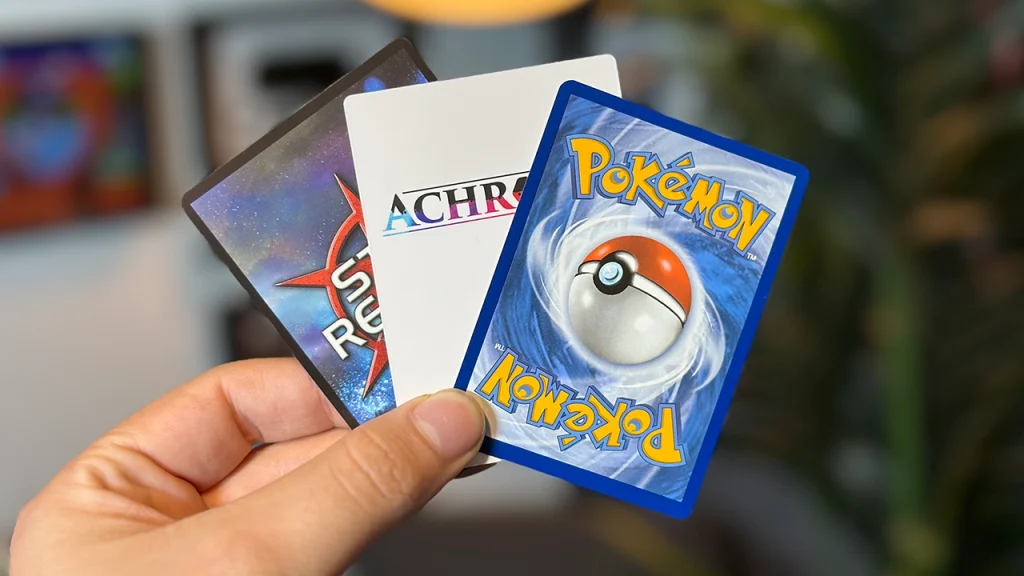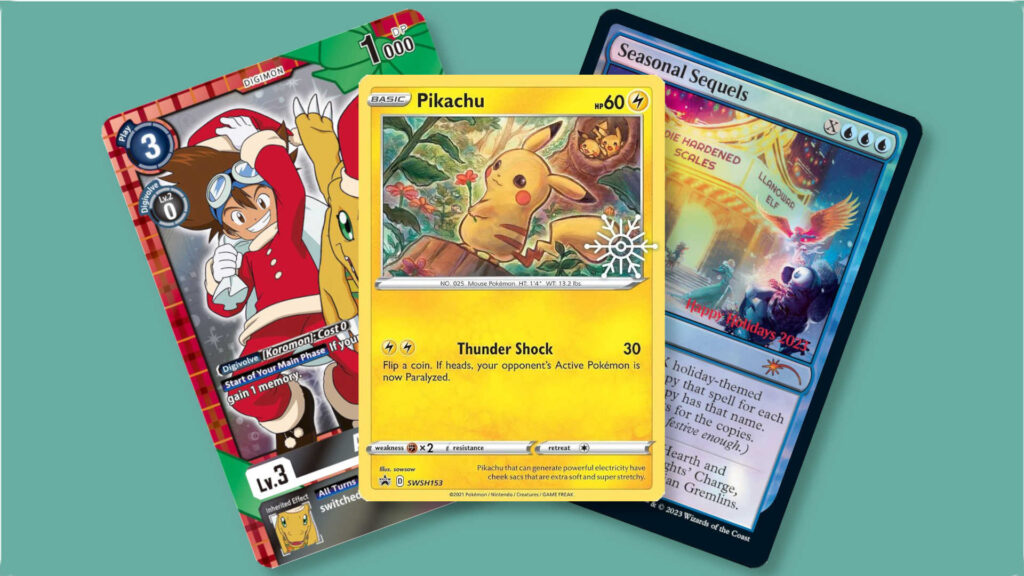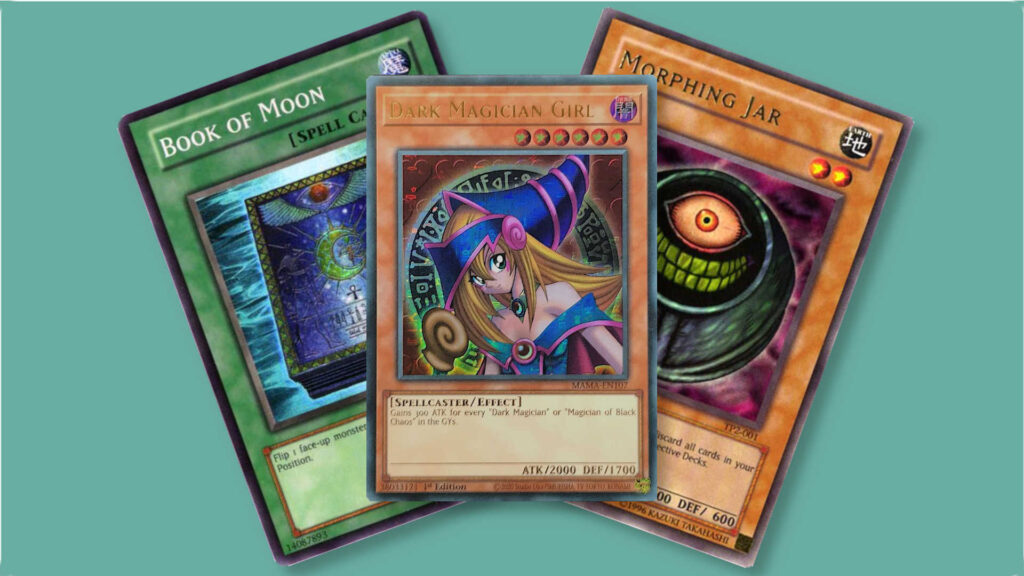It’s time to face off against a single opponent at the tabletop – as we check out the best 2 player card games!
As you may imagine, here at Card Gamer we’re big fans of matching wits against a single opponent – our skills honed from years of playing a variety of different 2 player card games.
Along with trading card games and deck building games, other types of card game also frequently make it to our tabletops.
Which are the best though?
Let’s find out – come with us as we list our picks for the best 2 player card games!
Table of Contents
Toggle1. Star Realms
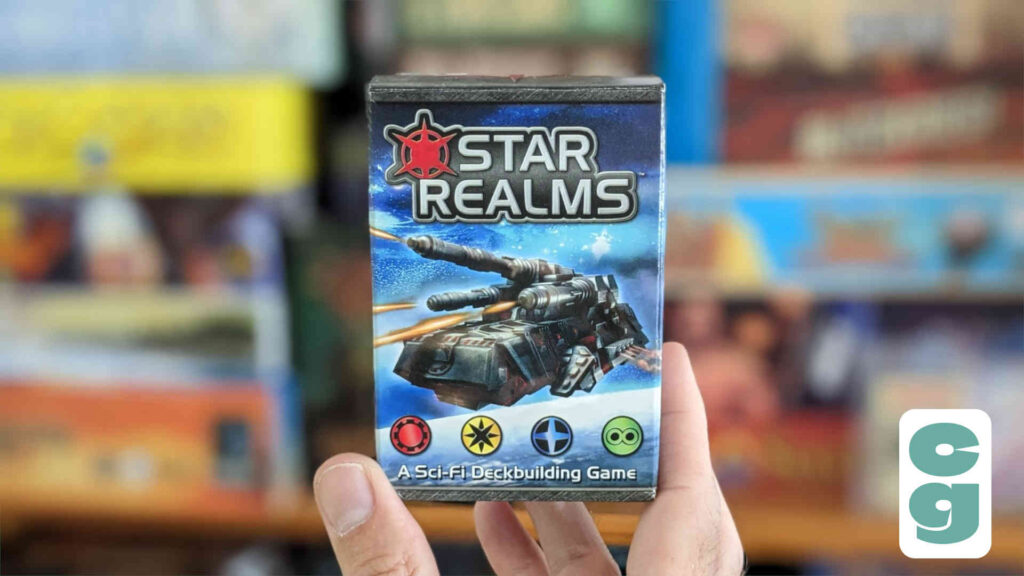
In our number one spot, we have what I consider to be just about one of the most perfect and well balanced, self contained two player card games of all time.
Star Realms is a deck building game in a small box, playable without any extra components at all – even scoring is cleverly handled by a couple of cards for each player.
Starting with a fixed deck of ten cards, players take turns to buy new cards to add to their decks from a central marketplace, with money and attack power being added from cards played, then reset between turns.
Players seek to reduce their opponent’s Influence total to zero while keeping their own afloat.
It’s fast paced, incredibly easy to learn and – with four factions in the basic game – near endlessly replayable, with a superb amount of balance and variety.
There are numerous standalone expansions that add to the basic formula, such as Star Realms Frontiers – which features both co-op and solo modes – but the best place to start is definitely the standard, basic version of Star Realms.
Excitingly, the expansions can not only be played on their own, but also combined with the basic game too – and if you do want to play with more than two players, you can do so by adding in extra decks.
It’s a brilliantly flexible, incredibly addictive game that’ll keep you coming back for more, for many years to come.
In terms of value for money, Star Realms really is hard to beat – but, importantly, it’s incredibly strong in gameplay terms too.
2. Pokemon Trading Card Game
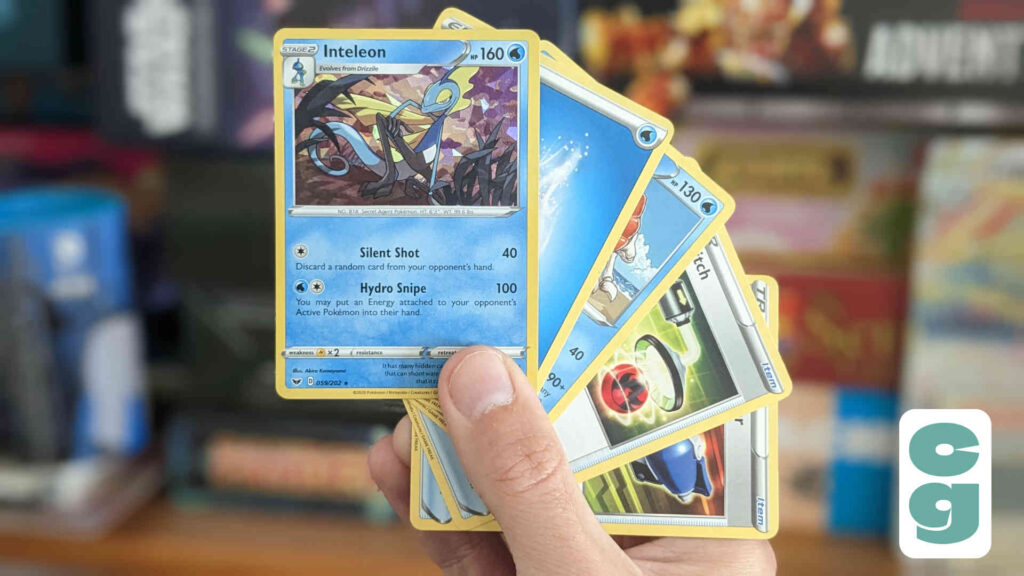
Here at Card Gamer, we’ve been fans of the Pokemon Trading Card Game (or TCG) for decades.
While not the first game of its kind (we’ll come to that!), the Pokemon Trading Card Game is one of the longest running and still one of the most popular TCGs in the world.
Despite seeming fairly complicated to newcomers, the Pokemon TCG – if you need further information, check out our article on the difference between TCG and CCG – is actually pretty straightforward to learn too.
The complications come from the endless variations of cards you can use to build a deck – along with the attacks and abilities that some cards have.
However, you can easily get yourself started with Pokemon using two pre-built decks or the excellent Pokemon Battle Academy set, which contains a nicely balanced set of decks and accessories that’ll get you up and running in no time.
Of course, the real fun and longevity of Pokemon comes from putting together your own deck of creatures, items and supporting characters – then taking it to the tabletop against someone who has done the same.
If you’re playing casually, the possibilities are endless – and you’ve got two and a half decades of cards you can use, in theory!
We also cover the basics in our how to play Pokemon TCG guide, which will give you what you need to begin learning the game.
3. Magic: The Gathering
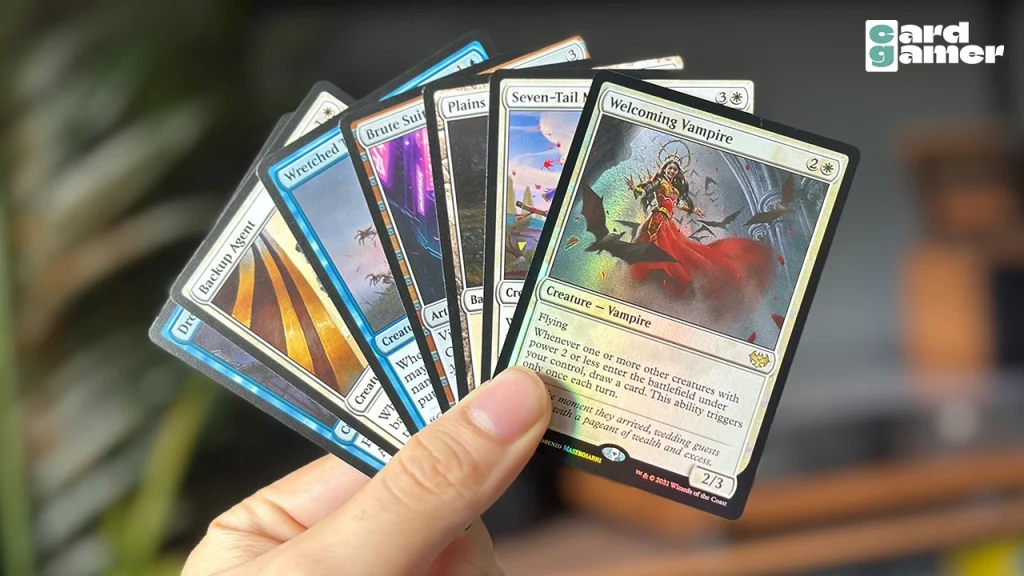
The first – and, many would say, still the best – collectable card game (or CCG) in the world, Magic: The Gathering has been a staple of game stores and tabletops for three decades now!
In Magic: The Gathering (often abbreviated to MTG), players take on the role of Planeswalkers – essentially multiverse-jumping wizards – who duel, with the aim of reducing their opponent’s life total from 20 to zero points.
Players can play a Land card on their turn, which they use to get other cards into play.
Using creatures and other spells, players will engage in combat and clever card play to win – and, just like Pokemon, with MTG being a game in which you can build your deck from many thousands of cards, the possibilities are nearly endless.
If you aren’t already familiar with MTG, one of the best ways into the game is via a two player starter deck pack, which will give you all of the tools you need to learn and play with an opponent.
We’ve got a handy guide to give you a head start, with our how to play Magic: The Gathering article.
As it can be quite intimidating if you’re curious but don’t know where to begin, we’ve also got a pretty comprehensive how to get started with Magic: The Gathering guide – which will give you some invaluable advice, beyond the rules of the game, too!
4. Achroma: The Evolving Card Game
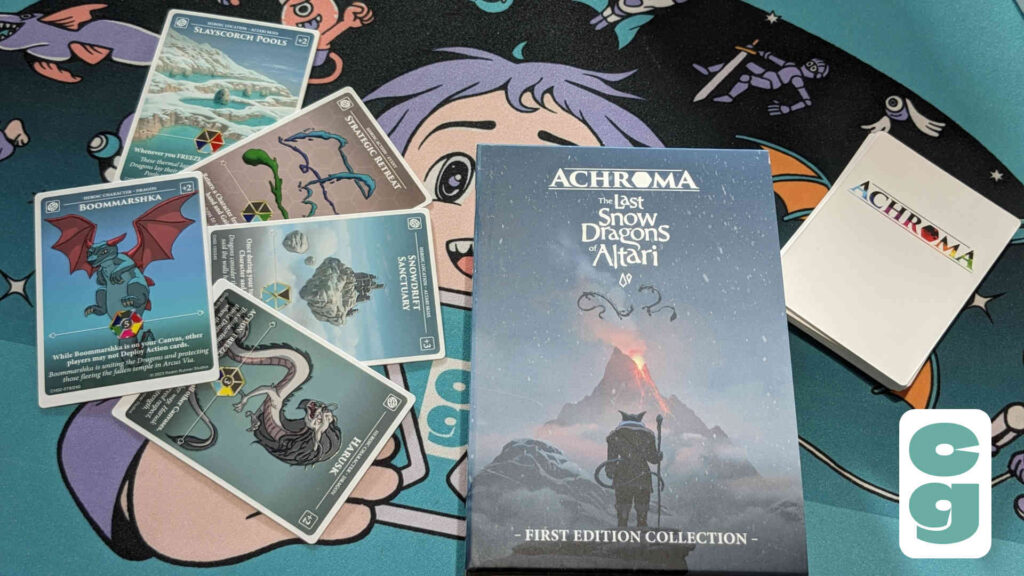
Here at Card Gamer, we’re huge fans of Achroma, which is known as The Evolving Card Game.
One of the coolest things about Achroma is that it allows for all of the clever deckbuilding that you’ll get in games such as Magic: The Gathering or Pokemon, but you don’t have to buy random packs of cards to get a small chance at getting a single, decent rare – or a functioning, competitive deck!
Instead, Achroma is sold in sets of two pre-built, semi-random decks – what you get is dependent on the set you buy, with each set based on a different part of the storyline.
That storyline takes place across five distinct Realms; Achroma’s version of the multiverse.
Here, the colourful Chroma is being drained from different Realms by the darkness of Achrom – which also forms the basis of the game’s win conditions.
You use your decks to either get yourself to 30 Shards of Chroma or drain your opponent’s Shards to zero in order to secure victory; the opposing win conditions mean that decks can be interesting, tense tugs of war – or races to drain or gain Shards!
Excitingly, each player’s Shard Bank is handled by an app, which also tracks the draining and Stealing of Shards between players too.
That app also functions as a way to keep track of what cards you own – and even features an adventure game that takes you on a dramatic, text-based adventure within the game’s world.
There’s so much more to discover and enjoy in Achroma – so we’d highly recommend checking out our comprehensive Achroma review, as well as our what is Achroma guide for even more information on this brilliant card game!
5. Disney Lorcana
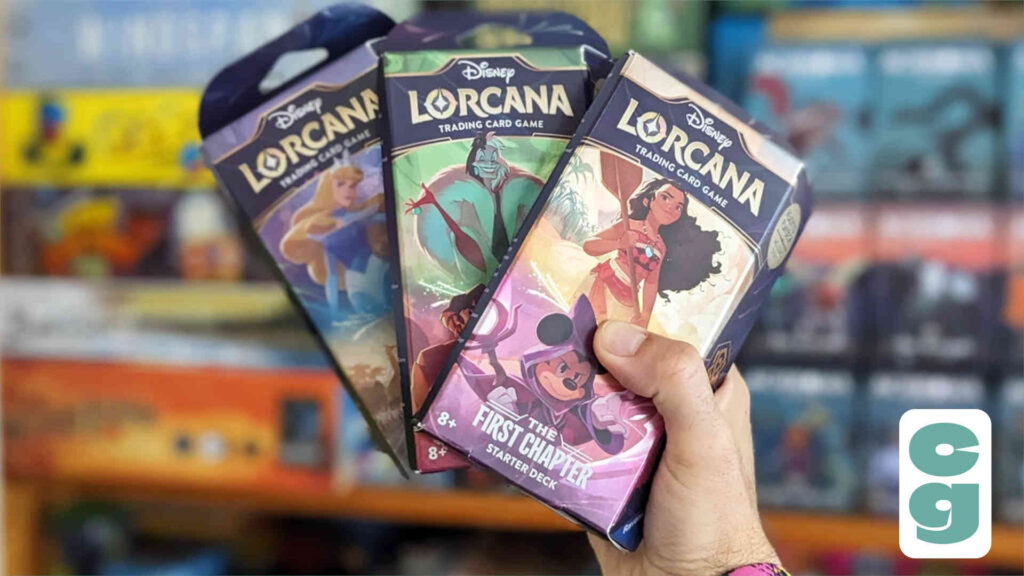
Without a doubt the biggest license to arrive in the trading card game world for many years, Disney Lorcana has caused a huge fuss amongst gamers and Disney fans alike.
In fact, publisher Ravensburger have really struggled to keep up with demand – with decks and booster packs selling out worldwide much faster than anticipated, keeping card values high and hype at ridiculous levels!
It’s a shame that so many people have been unable to get their hands on Disney Lorcana, because it’s a great introduction to the world of trading card games.
In many ways, it plays almost like a simplified Magic: The Gathering, with some clever mechanics of its own, such as using cards from your hand face down as ‘Ink’ to pay to bring other cards into play.
With cards functioning as both currency (when you use a card as Ink, it’s played face down and won’t come back into play, leaving you with often difficult choices as to which cards to ‘sacrifice’ in this way) and playable characters and actions, there’s less of the problems you can face in MTG when you don’t draw enough land, or in Pokemon when you fail to draw enough Energy cards.
Questing for Lore – with reaching a total of 20 Lore points being how you win the game – makes your characters vulnerable to attack, again creating tense and exciting decisions about who you commit to Lore gathering.
It’s an excellent game with a bright future; with second set Rise of the Floodborn imminent (check out our Rise of the Floodborn card list here), it’s clear that Ravensburger aren’t resting on their laurels.
You can learn more about how to play Disney Lorcana: Trading Card Game in our handy guide.
You can also check out important information such as our guide to Storyborn, Dreamborn and Floodborn in Disney Lorcana and even our primer on Lorcana Ink types too!
6. Arkham Horror: The Card Game
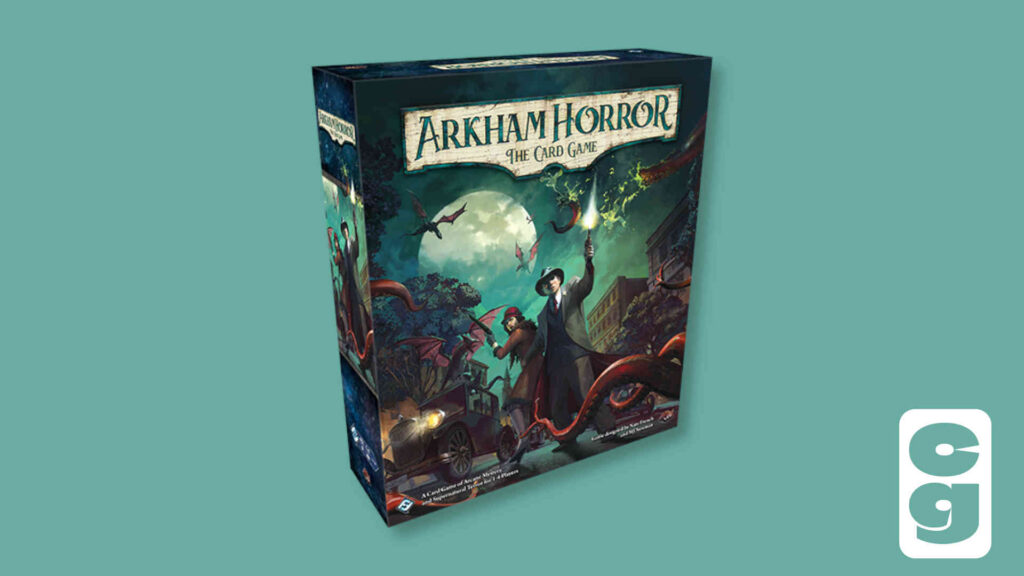
One of the very best card games we here at Card Gamer have ever played, Arkham Horror: The Card Game is a spectacularly involving, deeply immersive journey through HP Lovecraft’s Cthulhu Mythos.
Arkham Horror: The Card Game’s gameplay casts you (either alone or with a second player) as Investigators, trying to survive mysterious and otherworldly cases that can involve deadly, terrifying creatures and/or cultists.
The stories feel very open, with lots of choices as to how you progress through each one.
It almost has the feel of a roleplaying game; should you somehow survive the events of a case, your character can permanently level up or be altered, depending on what happens over the course of the story.
It’s an incredibly clever game with lots of excellent elements, with great writing and superb mechanics.
So why is it only at number six on the list of the best 2 player card games, I hear you ask?
Well, as a Living Card Game (you can find out more details on these in our guide, what are Living Card Games), Arkham Horror: The Card Game doesn’t have booster packs or random cards – instead, extra content is fixed (ie non-random) and purchased in extra boxes, such as Campaign or Mythos Expansions.
The problem is that it’s difficult – though not impossible – to play through a story a second time due to the fact that you’re aware of how the narrative plays out.
So if you want to keep playing different stories, before long you’ll need to purchase more and more content in the form of the expansions; it can be very pricey to keep playing Arkham Horror: The Card Game!
So, for as good as the game is – and it really is brilliant – the seemingly never-ending cost to keep playing (which feels a bit like DLC in modern video games) does drop it down our list significantly.
Though the same argument can be made for TCGs and CCGs, in a way, at least there you can purchase a single pre-built deck and in theory, that can be all you need to play forever if you only intend to play casually!
7. Lost Cities
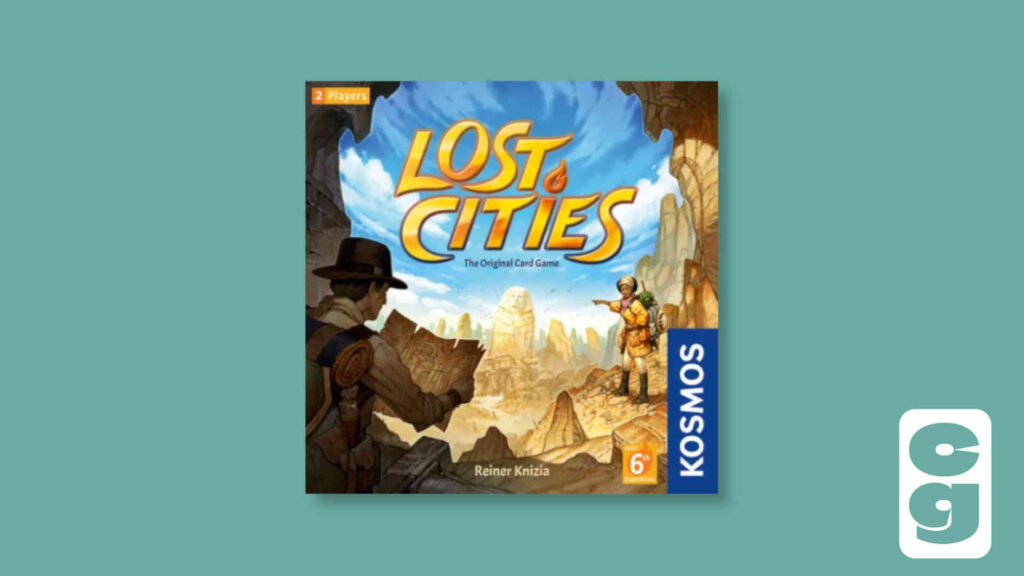
A stone cold classic from Reiner Knizia – the world’s most prolific board game designer – that was first published in 1999, Lost Cities is supposedly about going on expeditions and looking to be more successful an adventurer than your opponent.
In truth, like many Knizia designs, Lost Cities is a bit abstract and the theme isn’t what matters; you’ll be placing numbered cards at different locations, with some neat twists on placement, scoring and discarding that keep every single turn exciting and full of tricky decisions.
Scoring is similarly clever, with each expedition you start immediately costing -20 points – so you’re looking to gather at least twenty points on every expedition in order to make a ‘profit’.
It’s incredibly simple, very smart and has that almost indefinable ‘just one more go’ factor.
Despite being a very mathematical game in nature, it never feels like a dry, number crunching exercise.
If you’re looking for a small, self contained and highly focused 2 player card game that’s easy to both learn and teach, Lost Cities might just be the game for you!
8. Love Letter
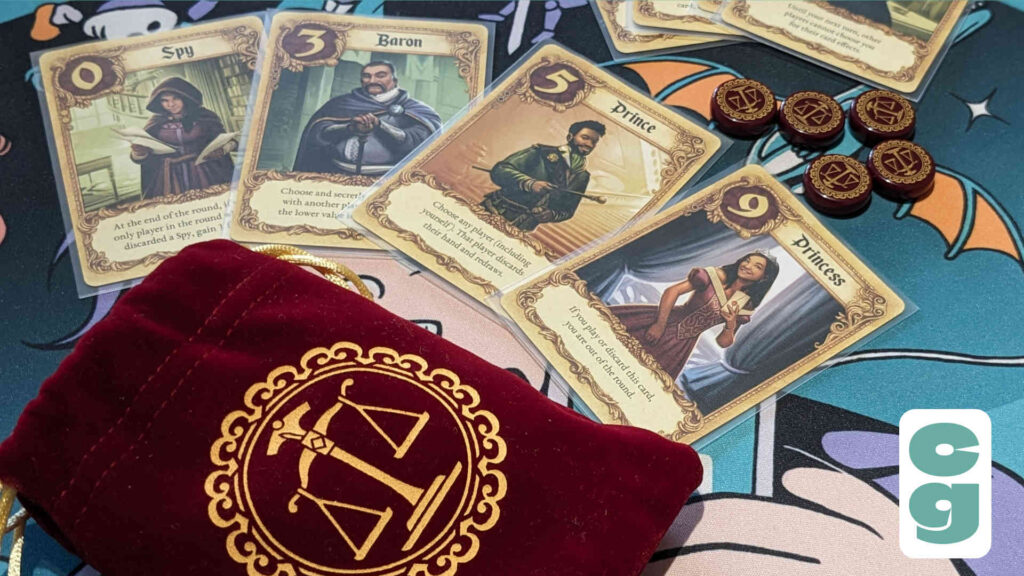
Speaking of small, self contained experiences, Love Letter is just about as minimalist as games can be.
So, what’s Love Letter about?
Much like Lost Cities, though Love Letter has a theme, it is fairly abstract and thinly applied.
You’re looking to get the titular letter delivered to the Princess – or just rid yourself of your rival(s).
Unlike many other games on this list, Love Letter isn’t designed as a primarily two player game, but it does work very well with two.
Each turn, you’ll draw and then play a card; you’ll always have a choice of two cards to play.
Each type of card has a specific effect and it’s very easy to knock an opponent out within one turn.
Given that there’s such a small number of cards in Love Letter – between 16 and 21, depending on the edition or variant you play – it’s a game that moves incredibly fast, with the possibility of playing several rounds of just a few minutes each.
You’ll want to, as well – it’s a clever little game which, somehow, just never seems to get old.
Also, if you want to add some extra elements to the base game, Star Wars and Marvel variants of Love Letter – named Jabba’s Palace and Infinity Gauntlet, respectively – are also available.
However, we’d still recommend the original version of the game as the best one for two players!
9. Turf War
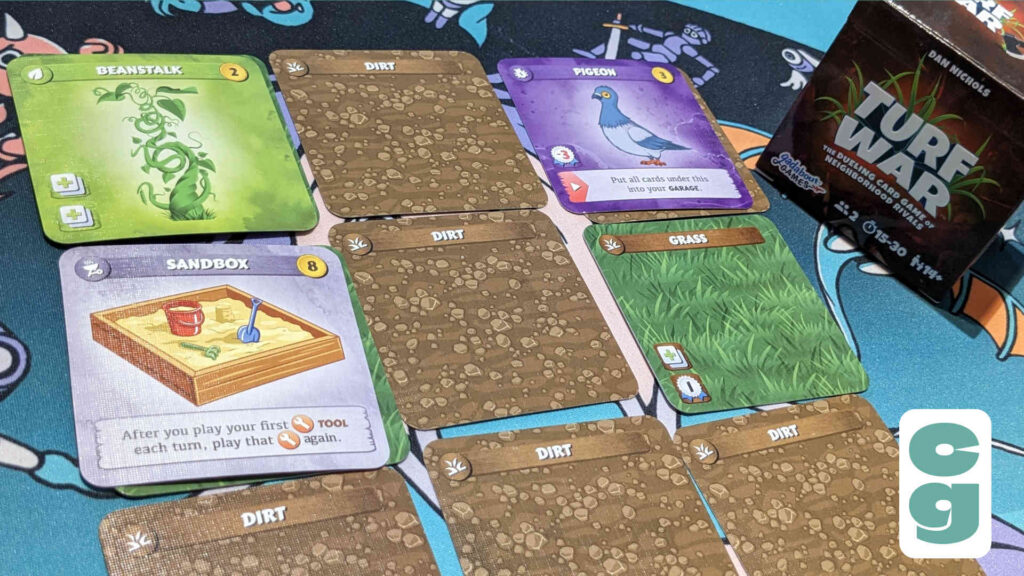
Who’d have thought that squabbling neighbours, battling over how acclaimed their gardens are, would make a good subject for a card game?
Yet it works brilliantly – as 2 player deck building game, Turf War, proves.
In its tiny – but stuffed – box of square cards, Turf War packs an awful lot of fun and exciting gameplay.
Players each begin with an undeveloped grid of earth and a handful of tools to get started with.
Much like the central marketplace row in games such as Star Realms, in Turf War players can purchase new cards to add to their decks – such as garden ornaments, features or plants – as well as further developing their land to allow for more embellishments to be added to their gardens.
There’s some really clever mechanics here that allow Turf War to feel incredibly thematic – going to work allows you to earn money and buy those fancy new bits and pieces for your garden, but also gives your opponent the opportunity to plant weeds or place damaging critters in your precious yard.
It’s a great little game that seems to have flown under the radar – but in our opinion here at Card Gamer, Turf War is absolutely one of the best 2 player card games around right now!
10. Shadowrun: Zero Day
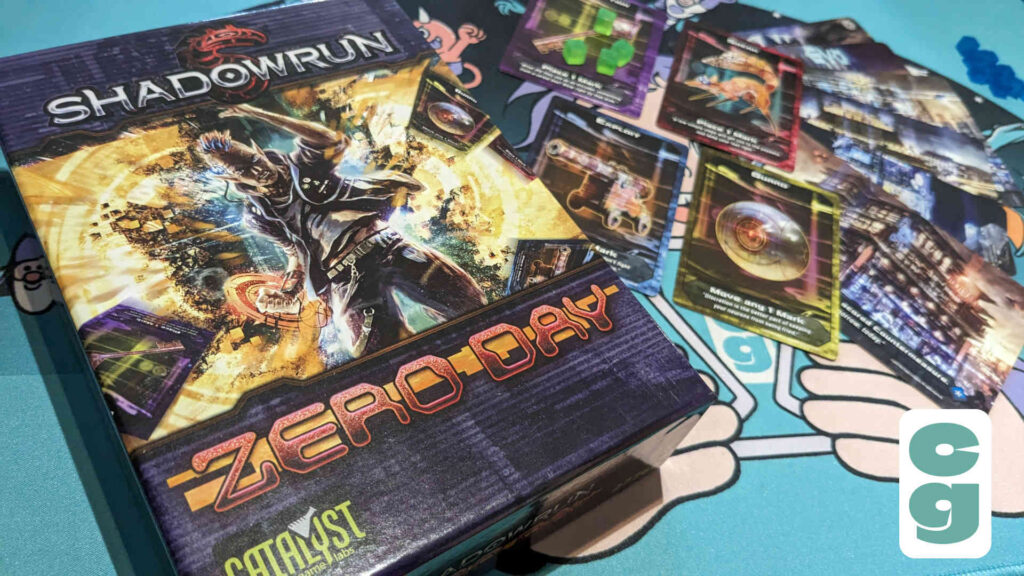
We’re big fans of the cyberpunk genre here at Card Gamer – and Shadowrun, originally a late 80s tabletop RPG setting and system, mixes cyberpunk with fantasy creatures and magic, to great effect.
Though the fantasy elements don’t make any difference at all to 2 player card game Zero Day, the cyberpunk setting is very much front and centre.
Players are looking to hack into corporate servers and steal secrets from them, with the aim of having the most points when a certain number of cards have been scored.
It’s a fast paced game with a nicely moody, dark colour scheme and some great references to the Shadowrun universe – though knowledge of the setting isn’t required to enjoy Zero Day.
Like Turf War, Zero Day seems to have been a game that doesn’t get the attention it deserves; it’s a cheap, accessible and fun game that you can pick up and play pretty quickly.
Unfortunately, it does seem that Zero Day is currently out of print – but you should be able to find a copy on eBay that isn’t too prohibitively priced!


